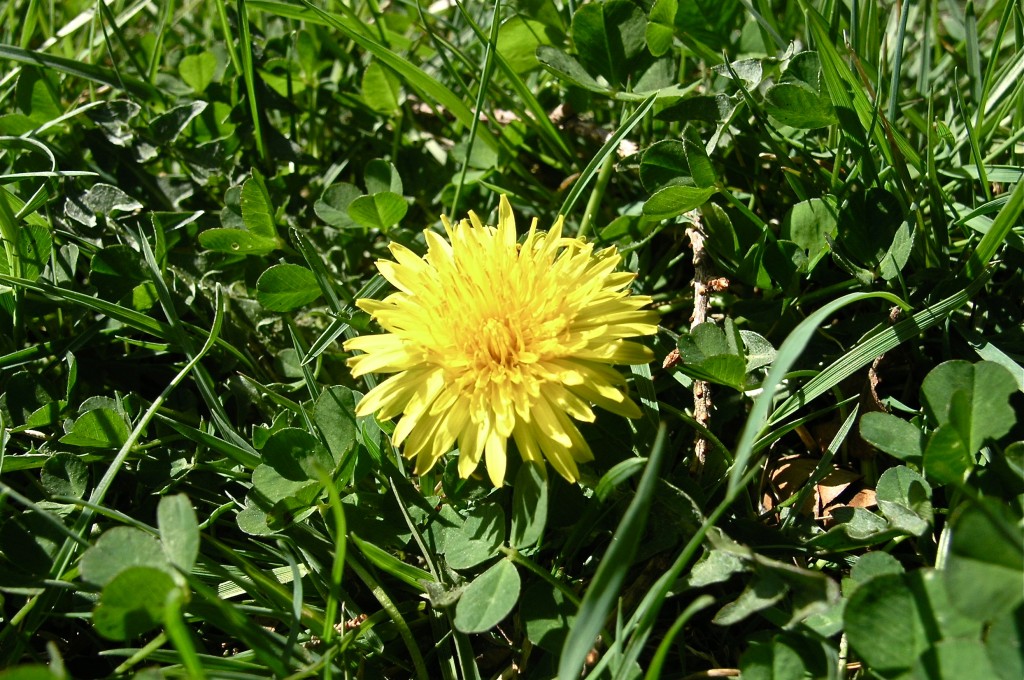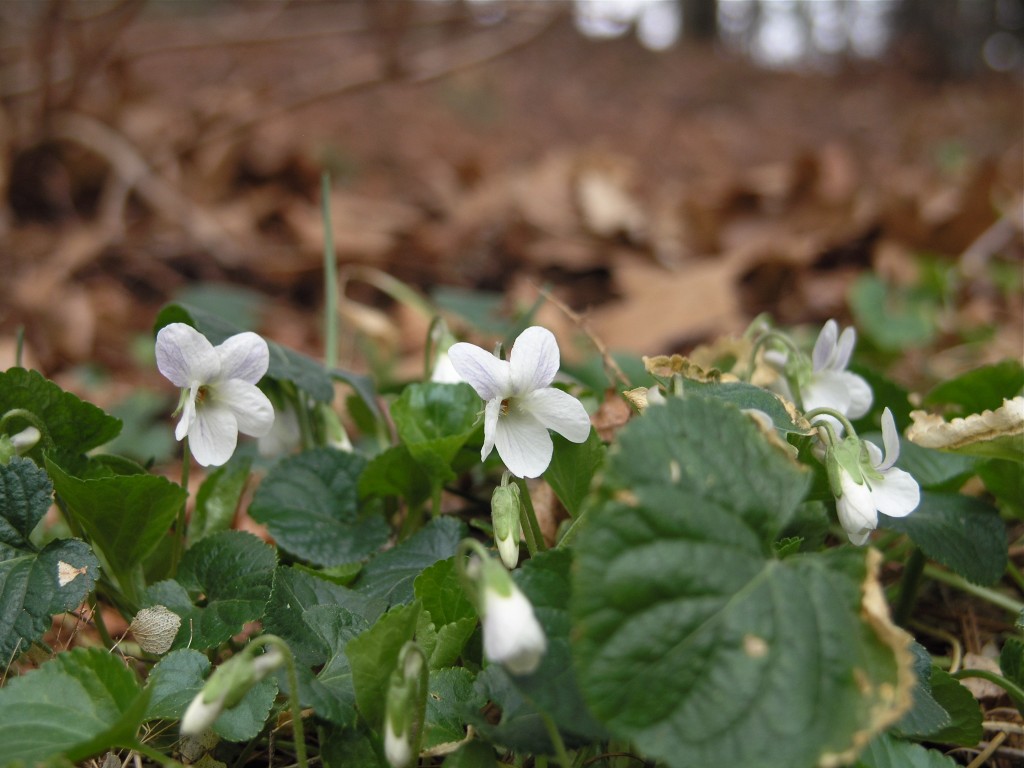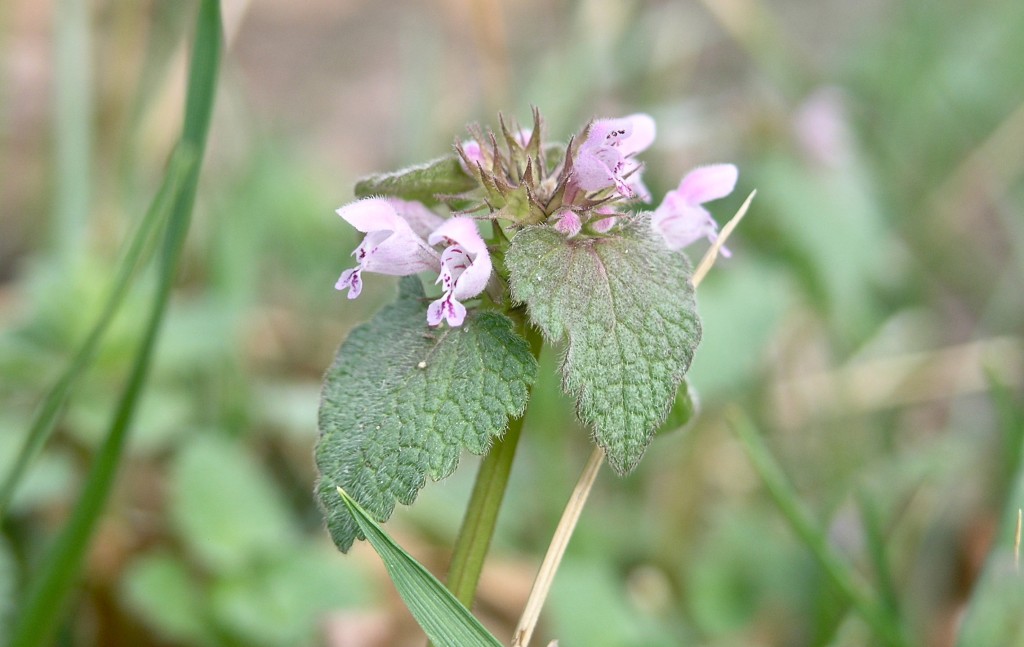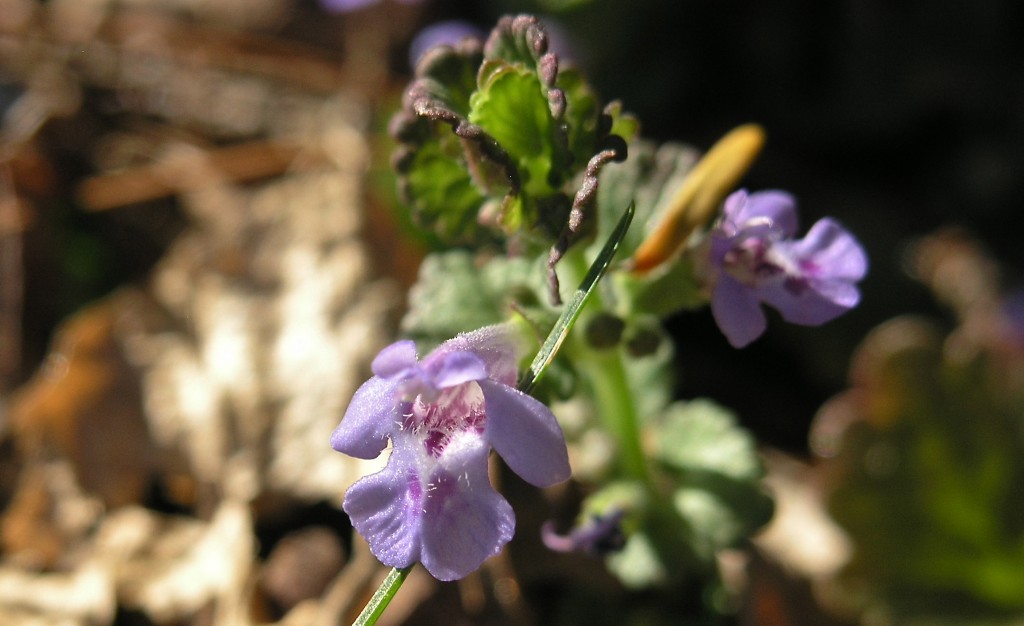 Well, sorry to say the only new wildflower we found today was the lowly dandelion. I know people eat the leaves and use them for making wine but still. Maybe if they were blue I could get excited.
Well, sorry to say the only new wildflower we found today was the lowly dandelion. I know people eat the leaves and use them for making wine but still. Maybe if they were blue I could get excited.
Common Dandelion (Taraxacum officinale)

 Today’s find was right outside the back door—a drift of white violets have bloomed on the edge of the woods. There are a lot of violet varieties … it appears that this is Common Blue Violet which is a variable species that can occur as white or partly white. They are native.
Today’s find was right outside the back door—a drift of white violets have bloomed on the edge of the woods. There are a lot of violet varieties … it appears that this is Common Blue Violet which is a variable species that can occur as white or partly white. They are native.
Common Blue Violet (Viola sororia)
 Walked today at Rocky Woods in Medfield and found nothing in bloom except back at the parking lot this beautiful little pink flower with the charming name Henbit Deadnettle! It’s a member of the mint family, native to Europe and Asia. Tiny but gorgeous surprise among all the brown.
Walked today at Rocky Woods in Medfield and found nothing in bloom except back at the parking lot this beautiful little pink flower with the charming name Henbit Deadnettle! It’s a member of the mint family, native to Europe and Asia. Tiny but gorgeous surprise among all the brown.
Henbit, Henbit Deadnettle (Lamium amplexicaule)
 Today we found one new wildflower blooming, at Elm Bank. It’s like a tiny orchid that you never notice til you are down on your hands and knees trying to focus your camera on it. This plant is introduced and invasive. It belongs to the Mint family.
Today we found one new wildflower blooming, at Elm Bank. It’s like a tiny orchid that you never notice til you are down on your hands and knees trying to focus your camera on it. This plant is introduced and invasive. It belongs to the Mint family.
Creeping Charlie, Ground Ivy, Gill-over the ground, Haymaids (Glechoma)
The flower is so small I might have missed it if I weren’t specifically watching for what is springing up. A weedy plant of the Mustard family. The foliage is edible! This name would be good for a nasty Harry Potter character.
Since I’ve started keeping this record, I’ve learned a new word: phenology, the study of periodic plant and animal life cycle events. Something people are thinking about a lot since the winter was so freakishly mild…
Hairy Bittercress, Hoary Bittercress (Cardamine hirsuta)
The first wildflowers I’ve seen this spring are Skunk Cabbage! The purple hood (spathe) is the flower, which appears before the leaves, and inside it is the reproductive part (spadix). The odor attracts flies, which pollinate the flowers.
We also heard wood frogs—they sound like ducks quacking. (We heard the first spring peepers of the season earlier this week, March 12.)
Skunk Cabbage (Symplocarpus Foetidus). Ridge Hill Reservation, Needham MA.
Audio of peepers and wood frogs: http://www.mister-toad.com/frogcalls.html